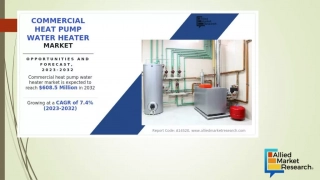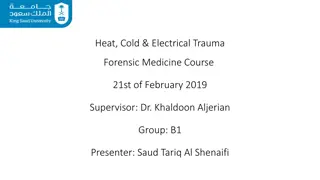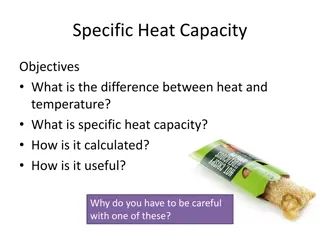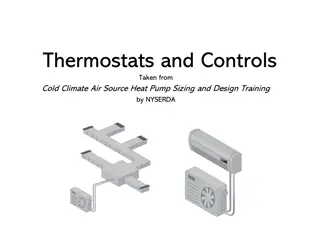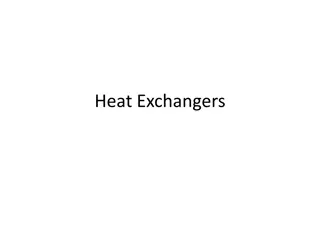Understanding Heat and Cold in Medicine: A Physiological Perspective
Explore the physical basis of heat and temperature in medicine, how molecules in motion relate to temperature, the concepts of heat and temperature, and the significance of different temperature scales like Celsius and Kelvin in medical applications.
Download Presentation

Please find below an Image/Link to download the presentation.
The content on the website is provided AS IS for your information and personal use only. It may not be sold, licensed, or shared on other websites without obtaining consent from the author. Download presentation by click this link. If you encounter any issues during the download, it is possible that the publisher has removed the file from their server.
E N D
Presentation Transcript
LOGO Heat and Cold in Medicine
Heat and Cold in Medicine LOGO Specialist in physical medicine and physical therapy probably used heat and cold the most. Other medical specialists, including family practice physicians, often prescribe heat or cold for therapeutic purposes. Surgeons sometimes use extreme cold (cryosurgery), and radiologists are often involved in interpreting thermographic images.
Physical basis of heat and temperature LOGO Matter is composed of molecules that are in motion. In a gas or liquid the molecules move about, hitting one another or the walls of container; even in a solid the molecules have some motion about the sites that they occupy within the crystal structure. The fact that the molecules move means that they have kinetic energy, and the kinetic energy is related to the temperature.
Physical basis of heat and temperature LOGO The average kinetic energy of the molecules of an ideal gas can be shown to be directly proportional to the temperature; liquids and solids show a similar temperature dependence. In order to increase the temperature of a gas it is necessary to increase the average kinetic energy of its molecules. This is can be done by putting the gas in contact with a flame. The energy transferred from the flame to the gas causing the temperature rise is called heat.
Physical basis of heat and temperature LOGO Heat: is the total energy of molecular motion in a substance. Temperature: is a measure of the average energy of molecular motion in a substance. molecular motion
Physical basis of heat and temperature LOGO Heat energy depends on the speed of the particles, the number of the particles, and the type of particles (the size or mass)in an object. Temperature does not depend on the size or type of object. For example, the temperature of a small cup of water might be the same as the temperature of a large cub of water, but the cub of water has more heat because it has more water and thus more total thermal energy. It is heat that will increase or decrease the temperature. If we add heat, the temperature will become higher. If we remove heat, the temperature will become lower. Higher temperatures mean that the molecules are moving, vibrating and rotating with more energy.
Temperature Scales LOGO Celsius (oC) scale Kelvin (oK) scale. There are three types of Temperature Scales Fahrenheit (oF) scale. Celsius (oC) scale. Kelvin (oK) scale. Fahrenheit (oF) scale.
Temperature Scales LOGO Fahrenheit (oF) In United States the most common temperature scale is the Fahrenheit. Water freezes at 32oF and boils at 212oF, and the normal body temperature (rectal) is about 98.6oF.
Temperature Scales LOGO Celsius (oC) Most scientists in the United States used the Celsius (oC) scale (formerly called the centigrade scale), which is in common use throughout most of the world. Water freezes at 0oC and boils at 100oC, and the normal body temperature (rectal) is about 37oC.
Temperature Scales LOGO Kelvin (oK) scale. Another important temperature scale used for scientific work is the Kelvin (oK), or absolute scale, which has the same degree intervals as the Celsius scale; 0oK (absolute zero) is - 273.15oC water freezes at 273.15oK and boils at 373.15oK, and the normal body temperature (rectal) is about 310oK. This temperature scale is not used in medicine.
Temperature Scales LOGO relationships between the different temperature scales oK = 273.15 +oC 9 5 oC+32 5 9 (oF-32) oF= oC =
Temperature Scales LOGO Example The temperature of the human body is normally about 98.6 F. calculate the temperature of the body in C and K? oC = (5/9) (oF-32) =5/9(98.6-32)=37oC oK = 273.15+oC=37+273=310.15oK
LOGO Temperature Measurement
Temperature Measurement LOGO Thermometer is a device used to measure the temperature, there are several important types of thermometers are: Glass-liquid thermometer Thermistors Thermocouple Thermopile
Temperature Measurement LOGO 1. Glass-liquid thermometer The most common way to measure temperature is with a glass fever thermometer containing mercury or alcohol. The principle behind this thermometer is that an increase in the temperature of different materials usually causes them to expand different amounts. In a fever thermometer, a temperature increase causes the alcohol or mercury to expand more than the glass and thus produces an increase in the level of the liquid. If the liquid expanded the same amount as the glass, the level of the liquid in the stem would remain constant with temperature.
Temperature Measurement LOGO Glass-liquid thermometer cross section
Temperature Measurement LOGO Glass-liquid thermometer thermometers are designed so that the mercury is forced to rise from the bulb in a capillary tube with a very small diameter. The smaller the diameter of the capillary, the greater is the sensitivity of the thermometer.
Temperature Measurement LOGO Glass-liquid thermometer Two things increase the visibility of the capillary 1. The glass case acts as a magnifying glass. 2. An opaque white backing is used. The capillary of a fever thermometer has a restriction just above the bulb so that after the liquid is forced into the stem by expansion it does not return when the temperature falls. In order to return the mercury to the bulb it is necessary to take advantage of some elementary physics involving centrifugal forces or by giving the thermometer a sharp jerk.
Temperature Measurement LOGO 2. Thermistors Thermistors rely on their change of electrical resistance as means of measuring temperature They are semiconducting devices and have negative temperature coefficients of resistance. The resistance decrease approximately exponentially with increasing temperature.
Temperature Measurement LOGO Thermistors Those used in medicine normally consist of a small bead of semiconducting material, a few tenths of a millimeter in diameter, encapsulated in a thin glass envelope and attached to two connecting wires. They can detect temperature changes of as a little as a 0.01 C. They have rapid response times because they have small heat capacities
Temperature Measurement LOGO Thermistors Their small size allows them to be inserted into blood vessels to monitor blood temperature. More routinely, they are used to measured core temperature (the temperature of the deep tissues of the body). Thermistor is essentially an electrical device and therefore its output can be fed to a chart recorder to provide a continuous recording of temperature.
Temperature Measurement LOGO 3. Thermocouple thermocouple consists of two junctions of two different metals If the two junctions are at different temperatures, a voltage is produced that depends on the temperature difference. Usually one of the junctions is kept at a reference temperature such as in an ice-water bath.
Temperature Measurement LOGO Thermocouple The copper-constantan thermocouple can be used to measure temperatures from (-190 to 300 oC). For a 100oC temperature difference, the voltage produced is only about 0.004V (4mV). Thermocouples can be made small enough to measure the temperature of individual cells.
Temperature Measurement LOGO 4. Thermopile It can be used to detect the heat radiate by the skin and consisted of a number of thermocouples connected in series
Temperature Measurement LOGO Thermopile One set of thermocouple junctions (A) is exposed to the radiation and is heated by it, the other set (B) is shielded from the radiation, a highly polished metal cone concentrates the radiation on the exposed junction, and these junctions are coated with lamp-black to enhance the efficiency with which the radiation is absorbed
Temperature Measurement LOGO Thermopile The meter reading depends on the rate at which heat energy enters the cone and this in its turn depends on the temperature of the skin. Thermopiles are normally calibrated to read skin temperature directly
LOGO Thermograph-mapping
Thermograph-mapping LOGO Thermography concept Thermography: Process to measure the body surface temperature, indicate that the surface temperature various from point to another depend on 1. External physical factors 2. Circulatory process near the skin- blood flow near the skin is the dominant factor.
Thermograph-mapping LOGO Thermography concept Measurement of surface temperature is thought to be useful in diagnoses of some diseases, which may change locally the skin temperature. All objects regardless of their temperature emit heat radiation. The body heat can give (IR) infrared radiation of long waves, which are not visible unlike the red-hot object, which is visible.
Thermograph-mapping LOGO Thermography concept Thermograph is the process in which the infrared radiation emitted by the body is used to produce a (thermal image) or (temperature map) of the surface of the body. The images are called Thermograms and are normally displayed on a TV screen Different temperatures are represented by different colors, in a black and white display by different shades of gray.
Thermograph-mapping LOGO Thermography concept Heat radiation power can be measured by: T4 W= ?? Ttemperature of the body e emissivity which depends upon the emitter material ?constant= 5.7 10-12W/cm2 K For radiation from the body e is almost 1
Thermograph-mapping LOGO Example:- 1. What is the power radiated per square centimeter from skin at a temperature of 306 K (33 C)? W= ???4 W = (5.7 10-12) (306)4=0.05 W/cm2 2. What is the power radiated from a nude body 1.75m2(1.75 104cm2) in area? W= (0.05) (1.75 104cm2) =875W.
Thermograph-mapping LOGO Thermograph uses: 1. Cancer detection: Breast cancer could be characterized by an elevated skin temperature in the region of the cancer. The surface temperature above a tumor was typically about 1 C higher than that above nearby normal tissue, and it was thought that this will be a good procedure for early breast cancer detection.
Thermograph-mapping LOGO Thermograph uses: 2. Thermograph used to study the circulation of blood in the head, differences in the blood supply between left and right sides can indicate circulatory problems. In diabetic patients ,Thermograph has had considerable success in reducing leg amputation in diabetic
Thermograph-mapping LOGO Thermograph uses: The blood supply in diabetic s leg is usually adequate, but if the tissues break down and an ulcer is formed, the need for blood in the leg may double. The circulation problems of the diabetic then become evident: the ulcer dose not heals and often becomes infected .With thermograph, the presence of a hot spot on the foot can be determined before an ulcer forms.
Thermograph-mapping LOGO Thermograph uses: 3. Dentistry : Dentists recommend the use of medical thermograph in monitoring control in the inflammation process into oral cavity and reaction of the regional lymphatic nodes, maxillary joint disease and other chronic disease of the bones, nerves located in the maxilla facial area Focal Tooth InfectionLower Left Tooth
LOGO Heat therapy
Heat therapy LOGO conductive method Radiant Diathermy Ultrasonic Wave
Heat therapy LOGO The primary therapeutic effects take place in the heated area 1. There is an increase in the metabolism resulting in a relaxation of the capillary system. 2. There is an increase in the blood flow, as blood moves into cool the heated area. capillary system
Heat therapy LOGO The physical methods of heat body 1. The conductive method: The conductive method is based on the physical fact that if two objects at different temperatures are place in contact, heat will be transfer by conduction from the warmer object to cooler one. The total heat transferred will depended upon the area of contact, the temperature difference, the time of contact, and the thermal conductivity of the materials. Hot baths, hot packs, electrical heating pads, and occasionally hot paraffin applied to the skin heat the body by conduction. Conduction heat transfer leads to local surface heating since the circulating blood effectively removes heat that penetrates deep into the tissue. Conduction heating is used in treating conductions such as arthritis, neuritis, contusions, sinusitis, and back pain.
Heat therapy LOGO The physical methods of heat body 2.Radiant (IR) heat: Radiant heat is also used for surface heating of the body. This is the same form of heat we feel from the sun or from an open flame. Man- made sources of radiant heat are glowing wire coils and 250 W incandescent lamps. The IR wavelengths used are between 800- 40,000nm (1nm=109m).The wave penetrate the skin about 3mm and increase the surface temperature .Excessive exposure causes reddening (erythematic) and sometimes swelling (edema).Very prolonged exposure cause browning or hardening of the skin. Radioactive heating is generally used for the same conditions as conductive heating, but it considered being more effective because the heat penetrated deeper.
Heat therapy LOGO The physical methods of heat body 3. Radiowave heating (Diathermy): Short wave diathermy utilizes electromagnetic waves in the radio range(wavelength~ 10m),and microwave diathermy uses waves in the radar range (wavelength~ 12cm).Heat from diathermy penetrates deeper into the body than radiant and conductive heat. It is useful for internal heating and has been used in the treatment of inflammation of the skeleton, bursitis, and neuralgia.
Heat therapy LOGO Radiowave heating (Diathermy): Different methods are used for transferring the electromagnetic energy into the body in short wave diathermy : I. By using capacitor plates: - the part of the body to be treated is placed between two metal plate-like electrodes energized by the high- frequency voltage. The body tissue between the plates acts like an electrolytic solution.
Heat therapy LOGO Radiowave heating (Diathermy): The charged particles are attached to one plate and then the other depending upon the sign of the alternating voltage on the plates; this results in resistive (joule) heating. Different body materials react differently to the waves, and this effect provides some selectively in treatments.
Heat therapy LOGO Radiowave heating (Diathermy): II. Magnetic induction method:- It is considered one of the methods that are used for transferring the electromagnetic energy into the body in short-wave diathermy.
Heat therapy LOGO Radiowave heating (Diathermy): In this method, either a coil is placed around the body region to be treated or a "pancake" coil is placed near the part of the body. The alternating current in the coil results in an alternating magnetic field in the tissues. Consequently alternating (eddy) currents are induced, producing joule heating in the body region being treated. This method is used in relieving muscles spasms and degenerative joints disease.
Heat therapy LOGO Radiowave heating (Diathermy): III.Microwave diathermy:-Microwave diathermy is another form of electromagnetic energy. These waves are produced in a special tube called a magnetron and then emitted from the applicator(antenna)which is placed at several inches from the region to be treated .
Heat therapy LOGO Radiowave heating (Diathermy): These wave penetrate deep into the tissues causing a temperature raised and deep heating. Microwave diathermy is used in the treatment of fractures, strains, bursitis, injuries to tendons, and arthritis. The frequency used is 900 MHz, which is found more effective than other frequencies in the therapy. It causes more uniform heating around bonny region
Heat therapy LOGO 4) Ultrasonic Wave: Ultrasonic wave are completely different from the electromagnetic wave just discussed; they produce mechanical motion like audible sound wave. As the ultrasonic waves move through the body the particles in the tissues move back and forth produce heating in the tissues. This method is useful for depositing heat in bones because they absorb ultrasound energy more effectively than dose soft tissues. Also it useful in relieving the tightness and scarring that often occur in joint disease. It greatly aids joints that have limited motion
cold in medicine LOGO Cryogenics concept Cryogenics is the science and technology of producing and using very low temperatures . The study of low-temperatures effects in biology and medicine is called cryobiology. Low temperature can be produced by liquefying gases. It was succeeded to produce liquid air (-196 C) in 1877 and liquid helium (-269 C) in 1908.For solid CO2 it is (-79 C) and liquid nitrogen (-196 C).


